Visions of white sand beaches and lush greenery fill your thoughts when you start to plan your trip to the Galapagos Islands, but after arriving on Rabida Island you might be surprised by the rich red color of the sand and rough volcanic coastline.
Stepping out onto the dark red beaches, you can expect to be greeted by a colony of sea lions. They are usually up for a quick photo, but be aware of the bull sea lion, he is usually the largest and loudest and very protective over his colony. The deep red color in the sand comes from the high content of iron in the volcanic material found on the island.

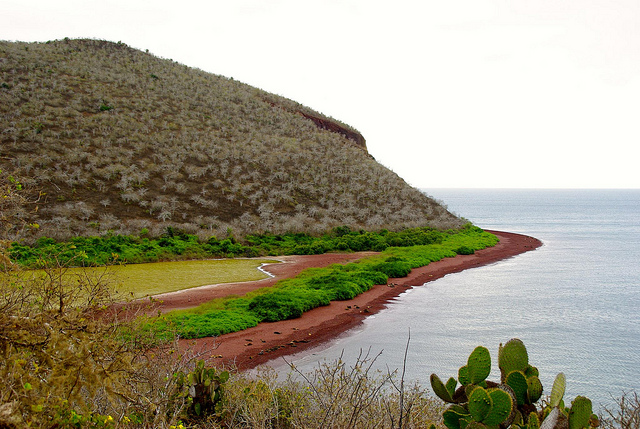
As you continue your hike, behind the beach you see the salt brush where the brown pelicans make their nests. This is your best chance to see these brown pelicans up-close so bring your best camera!
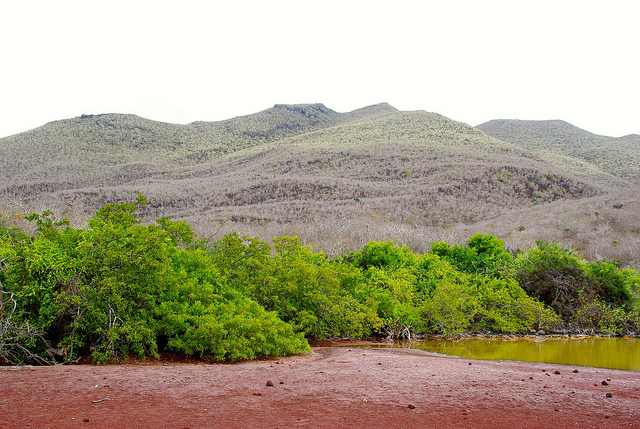
The trail that you follow back is lined with Galapagos Cactus and Palo Santo trees that cover the island. As you look down the coastline, you will see jagged rocks and volcanic cliffs with a similar red coloring as the sand due to the high iron content.
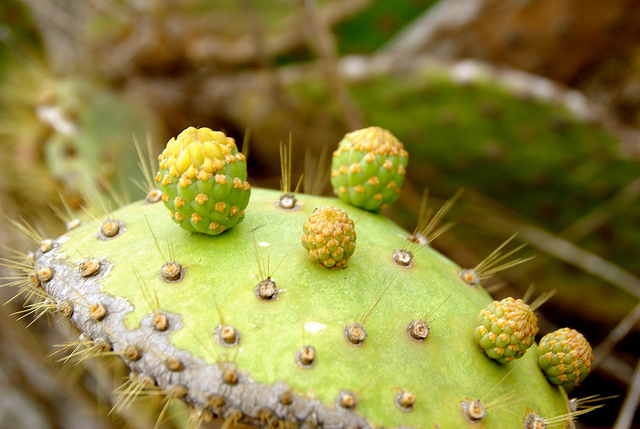
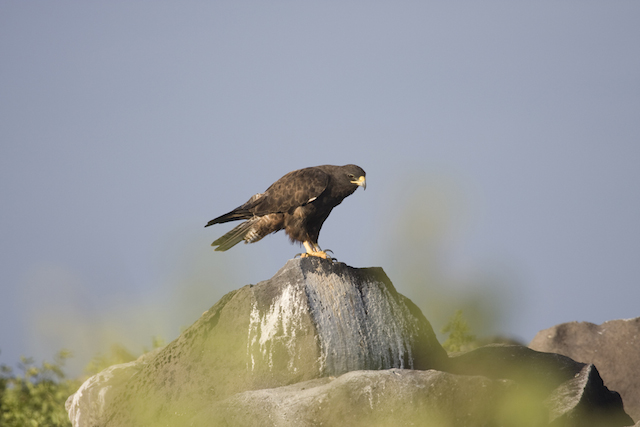
Along the trail you will see marine iguanas huddled together keeping warm, mocking birds and yellow warblers leading you back to a saltwater lagoon.

Rabida boasts of the best lagoons in the Galapagos for observing flocks of vibrant pink flamingos. The Galapagos is known for having large quantities of pink shrimp larva, which the flamingos feed on for 7+ hours a day and is where they get their beautiful deep pink coloring from.
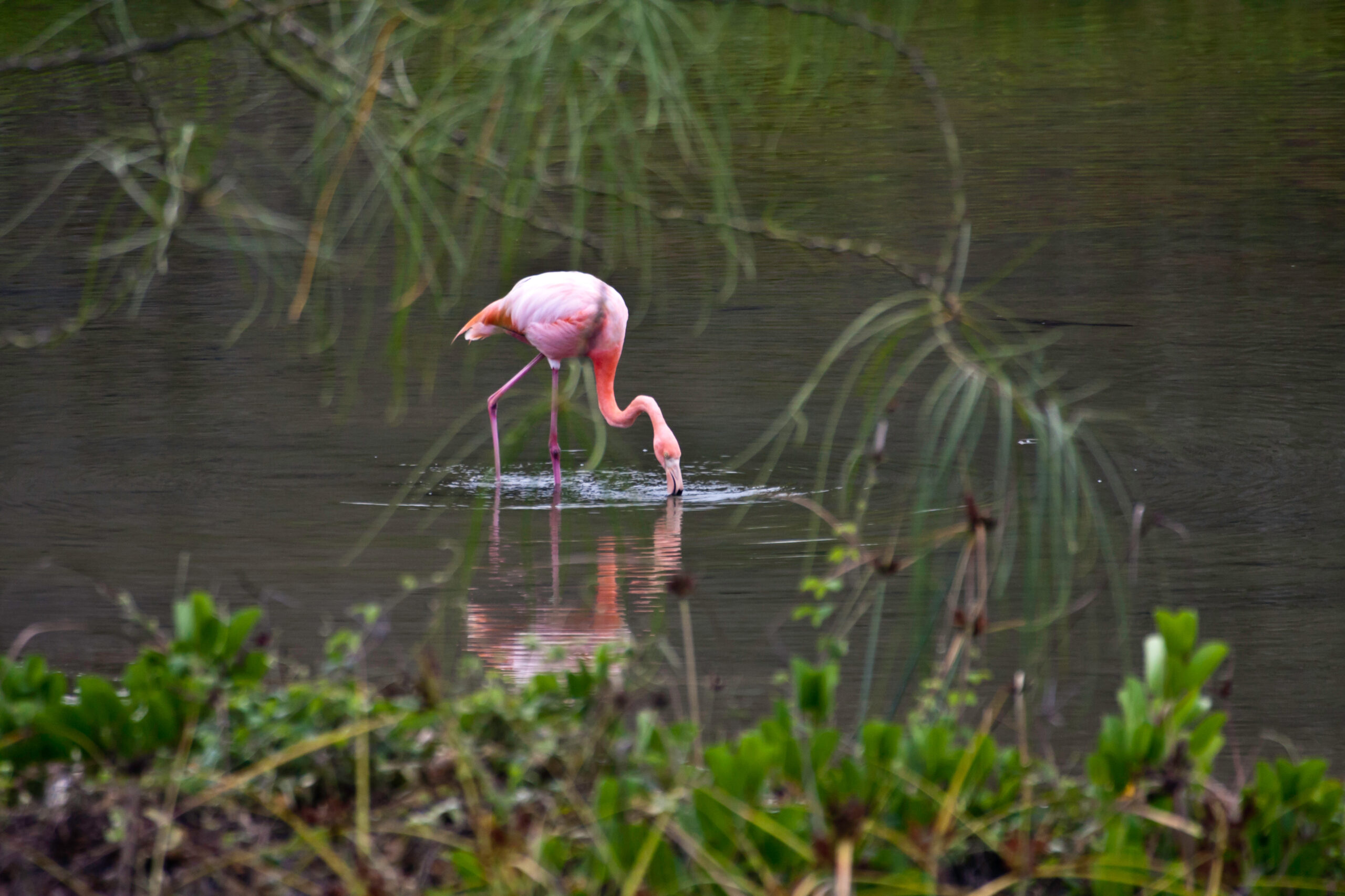

Keep your eyes peeled as you cruise by some of the rarest species of birds that can be found in the Galapagos, such as the Galapagos Hawk and nine different species of Darwin Finches. The cliffs of Rabida are populated by Blue-footed and Nazca Boobies building their nests along the coast and are easily spotted from your boat.
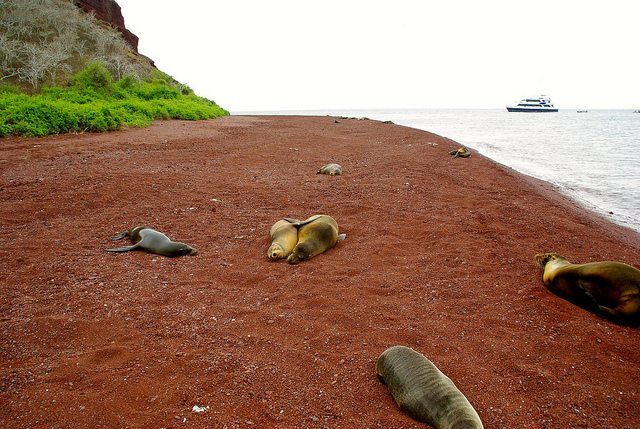
After your hike, make sure you put on a wet suit and take time to explore underwater. There are playful sea lions, colorful tropical fish and white-tipped sharks waiting for you!

Rabida Island is one of the most unique islands in the Galapagos and shouldn’t be missed on your next visit!




